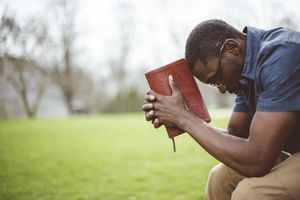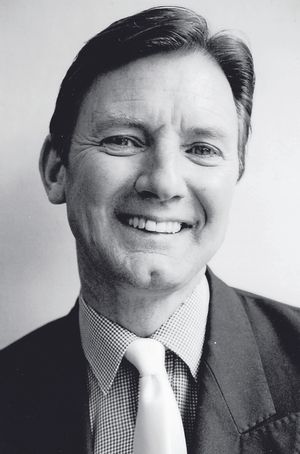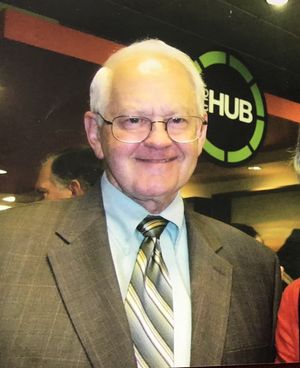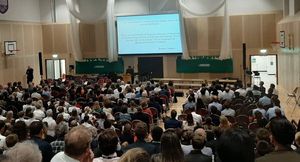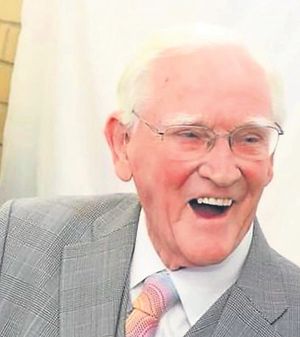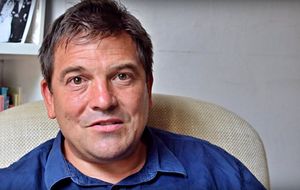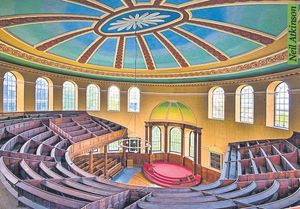The third day
‘And the third day [Jesus] rose again’. So states the Apostles’ Creed, confessed every Sunday by congregations all over the world. But what is the evidence for so extraordinary a claim? We shall consider the direct evidence, the circumstantial evidence and what lawyers call the ‘real’ evidence.
Direct evidence
Direct evidence is this: ‘I saw you cross the street and get into that car’. I am an eyewitness. That is what is called direct evidence, as opposed to ‘My mother told me that she saw you cross that street and get in the car’. That is not admissible evidence; that is hearsay.
All the disciples present the resurrection of Jesus Christ as direct (‘I saw it’) evidence. Go through the Gospel accounts and read them with an open mind. Read chapter 15 in the first letter to the Corinthians. They all say, ‘We saw alive the one they killed and whom our friends buried’.
You know what happens when a woman accuses a man of raping her and the evidence is overwhelming. The defence lawyers seek to undermine her character. They pry into her past and relationships. ‘By the way, where were you on so and so? Who is so and so and what sort of relationship did you have with him? How far did you encourage him?’ and so on, seeking to discredit the woman.
So how about the apostles? What was their character like? Were they reliable and decent men? Were they dreamers in Never-Never-Land? Were they subversive men, plotters and conspirators?
Steady on! These were businessmen, fishermen, men who had never been to rabbinic schools; plain ordinary unadorned men and women. That, in fact, was one charge brought against them.
But their lives and their characters could not be besmirched. Their whole argument was this: ‘I saw him alive – at the lake, on the road, on the hill, in the upper room, in the garden, by myself, with a friend, with the twelve, with 500 others’. And every one of them was prepared to give his life rather than deny it. And many of them did so die, not for an ideology but for a fact.
Circumstantial evidence
Circumstantial evidence goes like this; there is an act; that act is repeated and repeated until a certain pattern is formed; and that pattern leads you to a conclusion. It is a system of circumstances.
In the case of Jesus of Nazareth the circumstances were these. How was he born? Of a virgin, as prophesied. How did he live? Nobody could point to a single sin in his life. What did he do? He taught and preached with an authority that no one had ever heard before. He also did many mighty works or signs – demonstrating extraordinary power over creation, over demons, over sickness and over death. He had compassion on people who were like sheep without a shepherd.
At his own death he prayed for those who crucified him – asking that God would forgive them because of their ignorance. That is the picture of Jesus built up by those who knew him. Should we be shocked that such a man rose on the third day?
Is it a surprising thing that God should raise the dead? Jesus had predicted many times that he would be betrayed and crucified and that on the third day he would rise – and afterwards explain everything. He based his whole life on the prospect of resurrection.
Circumstantial evidence of such a pattern, dimensions and thoroughness wins cases. Extraordinary patterns are established. Look also at the way the event changed the lives of the men and women who saw him alive for 40 days.
Did they fall away and grow disillusioned? Did the whole thing fizzle out? Quite the opposite. You consider all this and you say, ‘Who is this man?’ Christians say, ‘Hallelujah! What a Saviour!’
Real evidence
There’s one last means used to prove a case. That’s the kind of evidence called real evidence. This doesn’t mean that direct and circumstantial evidence are not real. It refers to tangible things like a murder weapon or a footprint.
There’s a gun and ballistics for the bullet. There are fingerprints. There is a DNA match. There is a security camera picture. That’s what is called real evidence.
The real evidence for the resurrection is such facts as the empty tomb and the discarded grave-clothes, as well as the meals taken together in all kinds of circumstances for almost six weeks following his resurrection.
Jesus said to Thomas, ‘Go ahead; this is not a ghost; stick your finger into the palms of my hands’, and Thomas falls on his knees, and he says, ‘My Lord and my God’. When Jesus called out her name – ‘Mary!’ – she knew at once that this was her teacher. The evidence before them was real evidence.
Effectual evidence
For the rest of their lives those people who had been affected by the risen Christ served him and his kingdom. They went on telling people of this extraordinary person, this living Saviour, this caring, holy and wise friend.
There’s a common phrase you hear today when a person says, ‘I’m not in a relationship just now’, or they say, ‘I am in a relationship’. I am saying that every single Christian is in a relationship with the living Lord of heaven. That is the essence of true religion.
Let me point out that the resurrection distinguishes Jesus Christ from every other founder of a world religion. Buddha never prophesied he would rise from the dead and he did not – nor did Mohammed, nor did Confucius. None of the world’s great religions have at their core a resurrected Saviour. If the one you serve as Lord isn’t alive, why are you serving dust?
The resurrection also distinguishes Jesus from every other great man who has walked this world. Of him alone it can be said that on the third day he rose again from the dead.
Geoff Thomas


